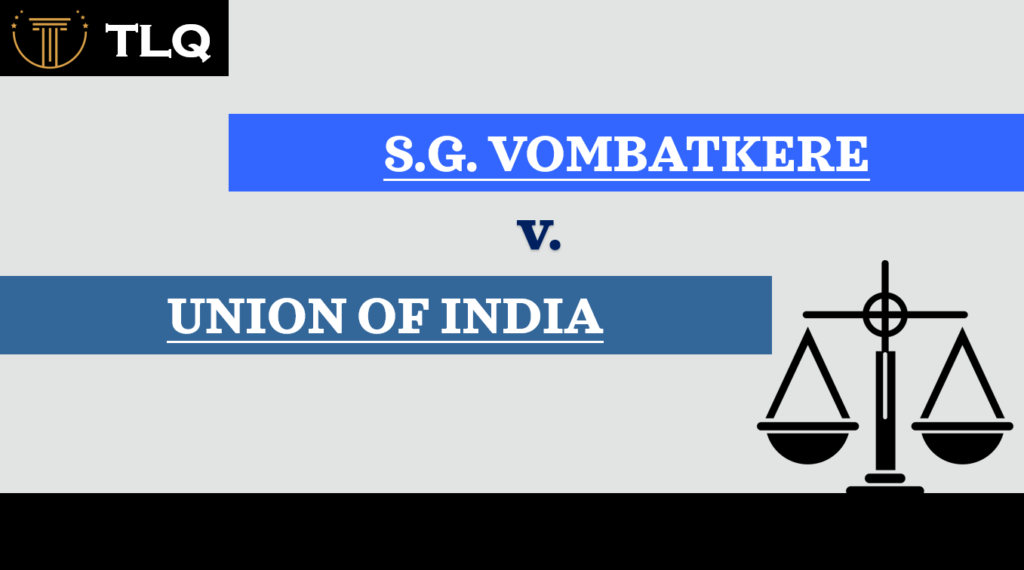Published On: 21st April, 2024

Authored By: Pushkar Kumar
ICFAI Law School, Hyderabad
ABSTRACT:
This article deals with different types of companies which are formed under The Companies Act, of 2013. These companies are classified on the basis of size or number (Private, Public & OPC); On the basis of control (Holding and Subsidiary); On the basis of ownership (Government, Non-Government and Associate). It also includes special categories like Foreign Companies and Body Corporate. This article will explore all these companies with the important case laws which will help to understand what is the ideal company one should pick in India and the legal structure under which it performs which is essential to know for the owner. At last, all the legal liabilities will be analysed and how it should be resolved.
INTRODUCTION:
According to Section 2 (20) of The Companies Act, 2013, the definition of a company is defined as “any company incorporated under The Companies Act, 2013 or under any previous company law.[1]
The Indian Companies Act, 1956 has been replaced by The Indian Companies Act, 2013. Previously there were many gaps in The Companies Act but now all the listed and unlisted companies are covered under this act. Nowadays, we have many different kinds of companies of various types and these companies can be classified on the basis of size, types, shares,
control, liabilities and ownership. Now let’s take a brief look at each of the following categories.
CLASSIFICATION OF COMPANIES:
1. On The Basis Of Size or Number Of Members In A Company:
a. Private Company: According to section 2(68) of the Companies Act, 2013 (as modified in 2015), a “private company” is fundamentally defined as a company with a minimum paid-up share capital as may be stipulated, and whose articles limit the power to transfer its A private firm must have the term “private” in its name. It has a maximum capacity of 200 members.
b. Public Company: Section 2(71) of the Companies Act of 2013 (as modified in 2015) defines a “public company”. A public corporation must have at least seven members, with no limit on the maximum number of members. A public business with limited liability must include the term “Limited” at the end of the name. Shares of a public firm are freely transferable.
c. One Person Company (OPC): The Companies Act of 2013 also introduces a new sort of corporate entity in the form of a company, in which just one individual owns the whole firm. It’s like a one-man army. Section 2(62) defines One Person firm (OPC) as a firm with just one member.
2. On The Basis Of Control:
a. Holding Company: Such a corporation either directly or indirectly controls the makeup of another company’s Board of Directors or possesses more than half of its equity share [2] A firm can become a holding company for another company in one of the following ways:
- by holding more than 50% of the issued equity capital of the company,
- by holding more than 50% of the voting rights in the company,
- by holding the right to appoint the majority of the directors of the company.
b. Subsidiary Company: A subsidiary firm is one that manages its operations under the supervision of a parent Tata Capital, a fully-owned subsidiary of Tata Sons Limited, is one example[3].
3. On The Basis of Ownership:
a. Government Company: According to Section 2(45) of the Companies Act, 2013, a “government company” is essentially defined as a business in which the federal government, any state government, or governments (including those from multiple states) own all or a portion of the paid-up share [4] This definition also includes businesses that are subsidiaries of government companies.
Depending on the ownership structure, a government corporation is required to submit its yearly reports to the state legislature and both houses of the parliament.
b. Non-Government Company: Nongovernmental organizations (NGOs) are voluntary associations of people or groups that are created to offer services or to promote public policies; they are typically unaffiliated with any government. The great majority of NGOs are non-profit institutions, notwithstanding the existence of some for-profit [5]
ASSOCIATE COMPANY:
“Associate company” is defined as follows by the provisions of Section 2 (6) of the Companies Act, 2013 and Rule 2 of the Companies (Specification of definitions details) Rules, 2014.
For businesses let’s say X and Y, X in relation to Y, where Y has a major influence over X but X is not a joint venture company or a subsidiary of Y. X is an affiliated business here.
Wherein, “Significant influence” is defined as having at least twenty percent of the total voting power, controlling a commercial agreement or participating in its decisions.
The term “joint venture” refers to a cooperative agreement in which the parties with joint authority over the arrangement have a right to its net assets.
If two independent businesses merge to form a new company and each of them owns 20% of the shares, the new business will be referred to as an associate company or joint venture firm. Through section 2(6) of the Companies Act 2013, the idea of an associate company, often known as a joint venture company, was first introduced in India. An indirect shareholding is not permitted; a corporation must have a direct shareholding of greater than 20%.
FOREIGN COMPANY AND BODY CORPORATE:
Foreign Company:
The Companies Act, 2013, Section 2, sub-section 42, defines “foreign company” in explicit terms. Any business or body corporate incorporated outside of India is considered a foreign corporation maintains a physical or virtual place of business in India, either independently or through an agent; and engages in any other type of business activity there.[6] Two requirements must be met in order for a corporation to be classified as a “foreign company.” The phrases “electronic mode” and “business activity” need to be defined in order to completely understand the definition’s breadth.
Body Corporate:
A company that is incorporated under the aforementioned Act or under any prior company law is defined as a company under Section 2 (20) of the Act of 2013.[7] The aforementioned Act’s Section 2(11) defines “body corporate.” A corporate entity with a legal presence is referred to as a body corporate. which covers a single person’s business, a private business, a public business, etc. A company incorporated outside of India falls within the purview of body corporate/corporation. But body corporate excludes the cooperative societies and other corporate entities that the Central Government has announced.
CONCLUSION:
As a result, we saw various company types and their operations. We observed that every individual is unique and significant. Every business matters to the development of the world. We can therefore draw the conclusion that The Companies Act, 2013 is crucial since it sets boundaries for businesses, thereby defining their legal purview. End users eventually benefit from this stated scope since it gives the companies a legal framework within which they must operate. As a result, these businesses stay inside a particular perimeter and don’t abuse their authority.
Reference(s):
[1] Section 2 (20) of The Companies Act, 2013
[2] Holding Company: What It Is, Advantages and Disadvantages (investopedia.com)
[3] Subsidiary Company: Definition, Examples, Pros & Cons (investopedia.com)
[4] Government Company under Companies Act, 2013 (taxguru.in)
[5] Non-Governmental Organization (NGO): Definition, Example, and How It Works (investopedia.com)
[6] What Is A Foreign Company Under The Companies Act, 2013? (ipleaders.in)
[7] Understanding the concept of Body Corporate (caclubindia.com)





